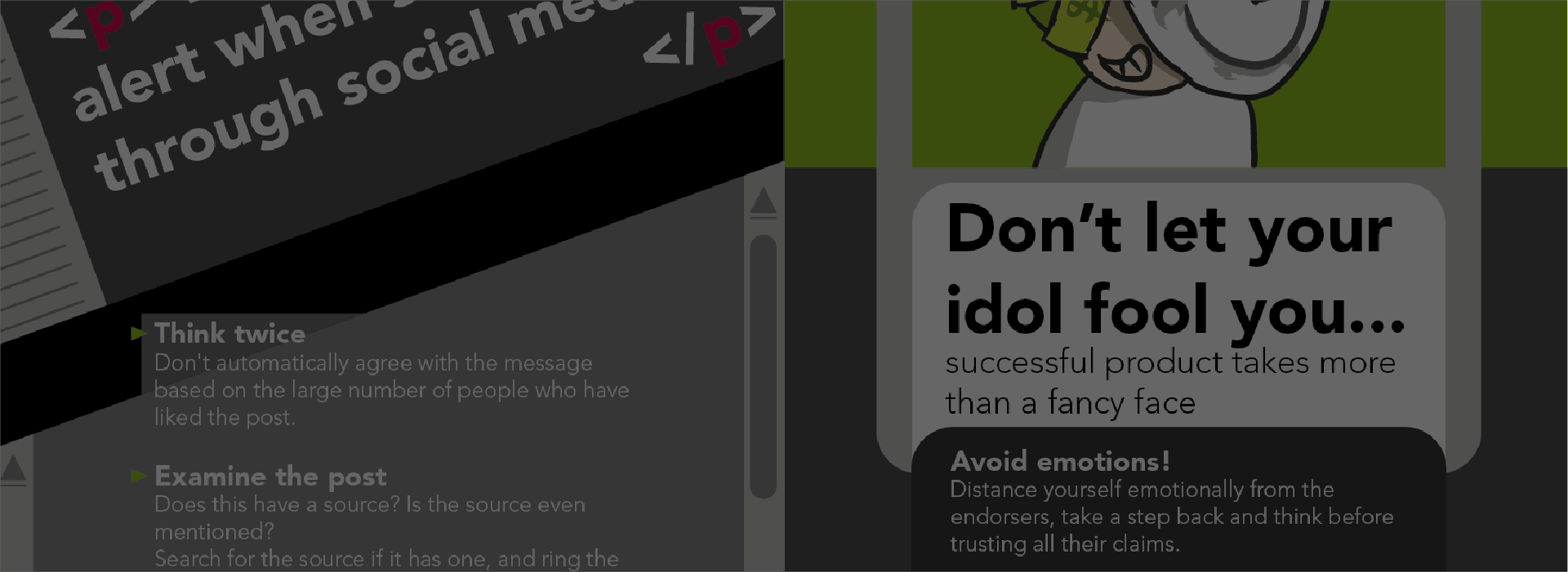
Background
- Type:Group School Project, group member includes Megan, Lena and Rico
- Time Span:March 24th 2021 to April 18th 2021
- What for: Design Communication and Collaboration course
- Tools Involved: Adobe Illustrator, PaintTool SAI2
The goal of this project is to research topics of online misinformation and design a set of posters to help students from the School of Interactive Arts and Technology(SIAT) to identify misinformation. This project is completed in a group of four. During the collaboration, each person was responsible to propose a set of potential topics and design ideas, and one final set of topics and ideas will be chosen during group meetings.
Results
My design approaches were considered the best by my group members, and we all agreed to develop the entire campaign based on the solutions/approaches I propose.
Design Considerations:
At first, research was conducted to find the misinformation issue that could be related to SIAT students. Two topics presented by Megan and Rico were chosen as our focus, where they include misleading endorsements for products from a trusted source, such as celebrities, and the bandwagoning effect in social media where people tend to automatically agree with popular posts without further considerations. I agree with these topics because SIAT is a relatively new program that has an emphasis on media art and technology, and it would be reasonable to suggest that social media, as a new way of gathering information, would be popular among SIAT students.
Besides aiding the group research activity, I developed two posters for the campaign based on the chosen topics and they are shown below.
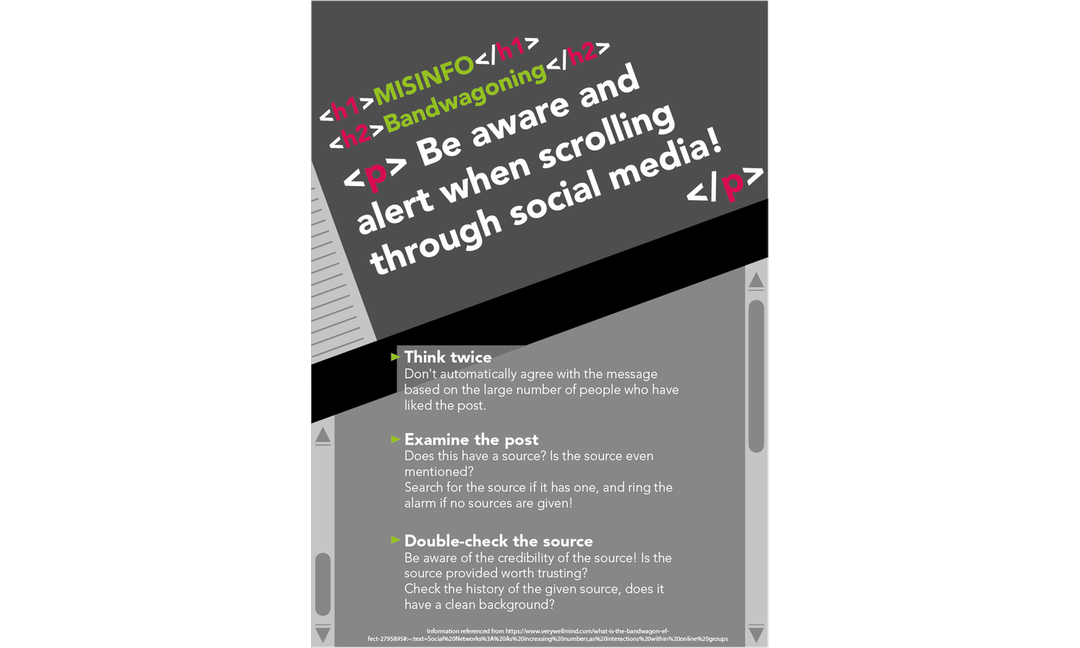
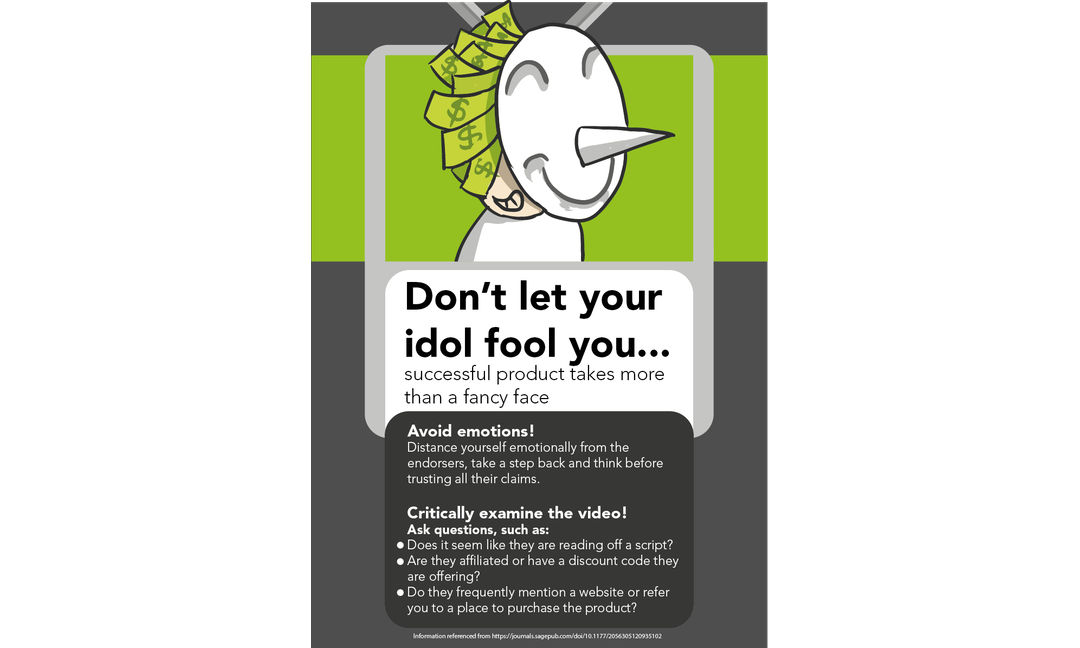
The 1st poster shown in figure 1 attempts to attract SIAT students by linking misinformation identification skills with coding by using HTML snippets as a design element. Since website development is one of the main focuses of SIAT, such connection could make misinformation identification techniques more related to SIAT student's daily life.
The 2nd poster shown in figure 2 uses an illustration showing a person covered by cash smiling maliciously behind a mask to reflect the unreliability of endorsements from celebrities. Such an idea referenced Megan's suggestion during group meetings, where Megan suggested that we could use a person covered with a mask to reflect the topic. The final poster uses an illustration to showcase such idea to reflect the "art" part of SIAT, and the low-saturation green is used to reflect the toxicity of such endorsements, as such a green tone could be related to toxicity and bad health.
Overall, my design approaches tried to make my posters engaging through 1. connecting to SIAT students by adding elements that represent SIAT student's daily life and 2. visually represent misinformation's threats through symbolism.
Alternative Solution Explorations
Alternative Solution 1
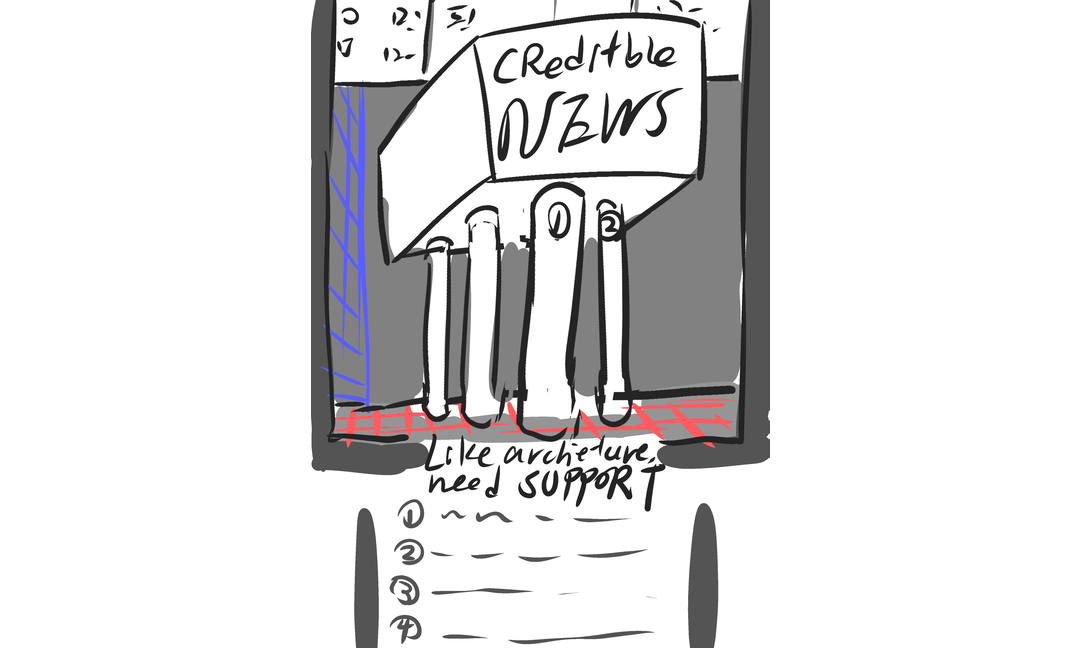
The approach shown in figure 3 uses a 3D modelling software interface to draw connections with SIAT students, since 3D modelling techniques are also included in some SIAT courses as well. This approach was not used because the relationship between the visual argument and our topic is not as clear as I expected.
Alternative Solution 2
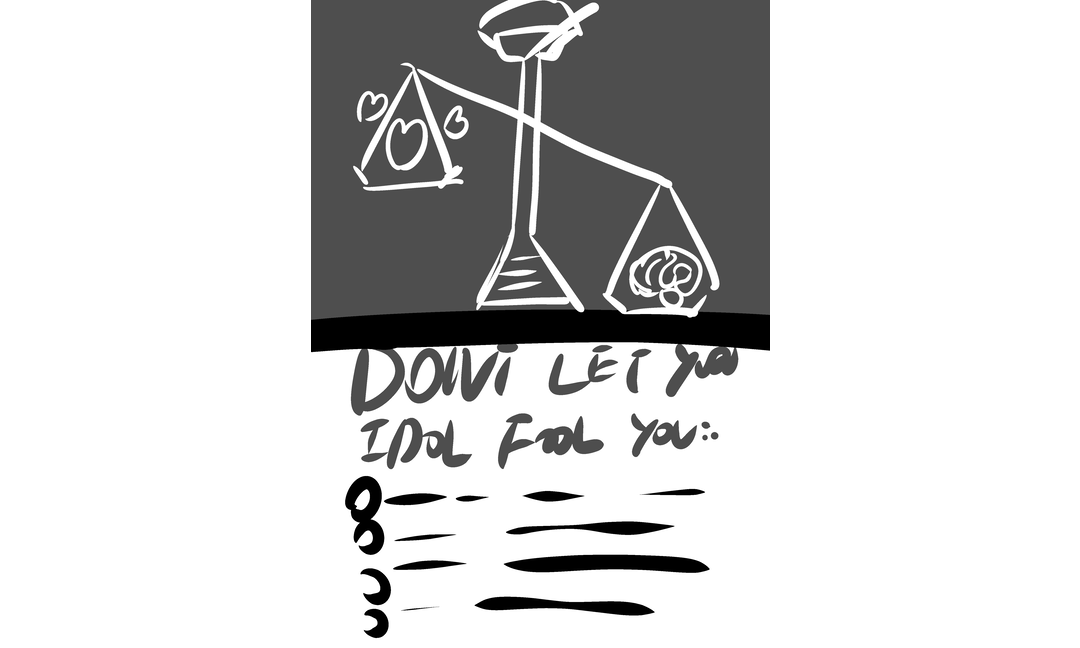
The approach shown in figure 4 uses a libra to convey the idea that critical thinking is more important than emotional responses. Since it is hard to incorporate the libra into the visual composition, it was abandoned after Megan suggested that we could consider showing a person covered with a mask.
Alternative Solution 3
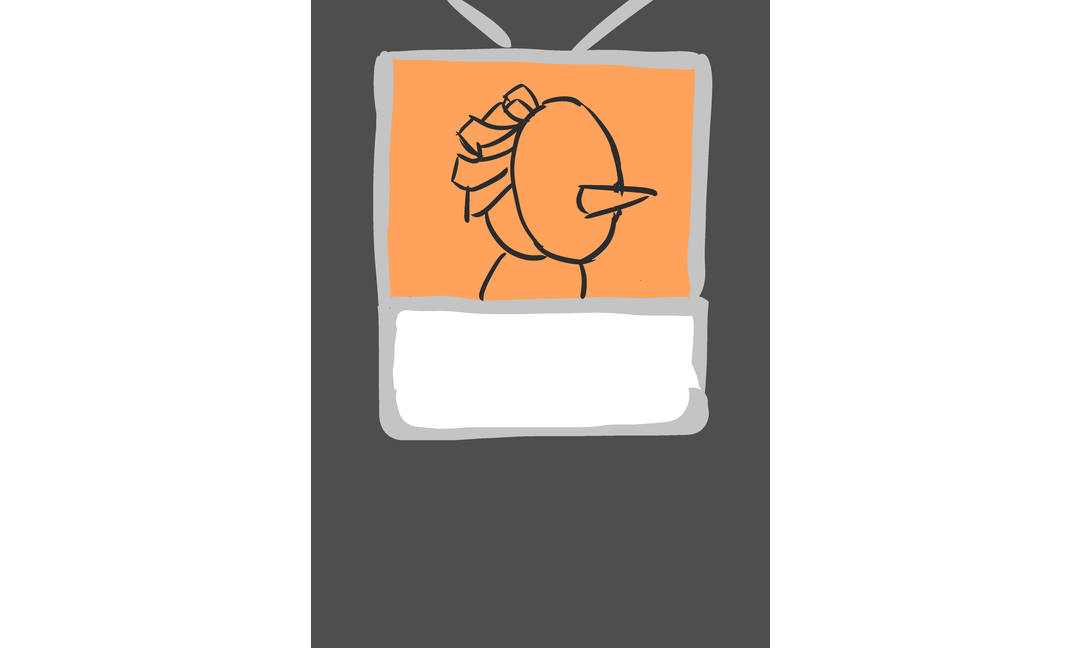
The approach shown in figure 5 was developed when I was beginning to explore Megan's suggestion. It uses orange as the background instead of green. This draft was abandoned because 1. orange as a warm colour does not reflect the danger of misleading endorsements and 2. orange is not consistent with the colour composition of my other posters.
Final Thoughts
Such a project shows me that the understanding of the destinated audience is rather important for good ideas. In the scope of this project for example, I would have no idea about SIAT student's academic life if I don't conduct at least some research about what SIAT really is. Without knowing SIAT student's life, it would be very hard for me to showcase the idea we want to propose to SIAT students, and ideas such as using web coding as a visual element will never be found.